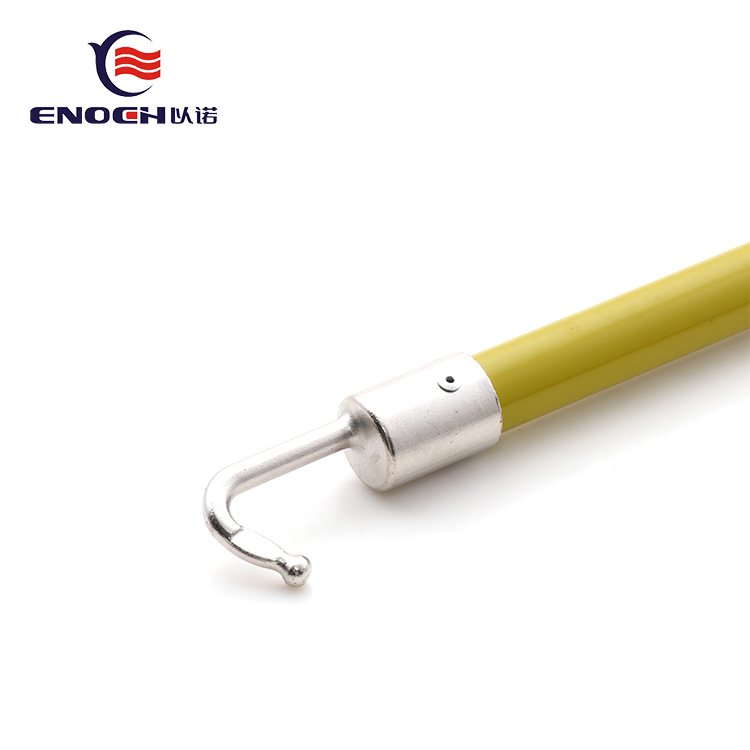Key features of an insulating operation stick include
2023-10-18
An insulating operation stick, also known as a hot stick or a live-line tool, is a specialized tool used by electrical workers and utility workers to safely work on live electrical equipment at a distance. It is designed to provide electrical insulation and protect the user from electric shocks when performing tasks on energized electrical systems.
Key features of an insulating operation stick include:
1. Insulating Material: The stick is made of non-conductive materials such as fiberglass or composite materials. These materials have high dielectric strength, making them effective in preventing the flow of electric current.
2. Length: Operation sticks come in various lengths, typically ranging from a few feet to several yards, allowing workers to maintain a safe working distance from live electrical components.
3. End Attachments: The stick often has interchangeable end attachments, such as hooks, clamps, or probes, to facilitate specific tasks like opening switches, pulling wires, or testing equipment.
4. Operating Voltage Rating: The stick is rated for specific voltage levels, ensuring it can handle the voltage present in the electrical system where it will be used.
5. Locking Mechanisms: Many operation sticks have locking mechanisms to keep the attachments securely in place during use.
6. Weight and Portability: Operation sticks are designed to be lightweight and portable, making them easy for workers to carry and use in various working conditions.
7. Visible Markings: They may have visible markings on the stick to indicate the maximum voltage level they are rated for, ensuring workers use the correct stick for the specific task.
When working with live electrical equipment, using insulating operation sticks is critical to maintaining the safety of workers and preventing electrical accidents. However, it's essential to follow proper safety procedures and training when using these tools to ensure their effectiveness and protect against potential hazards. Always consult and adhere to the safety guidelines and regulations provided by the relevant authorities and your employer when working with live electrical systems.



